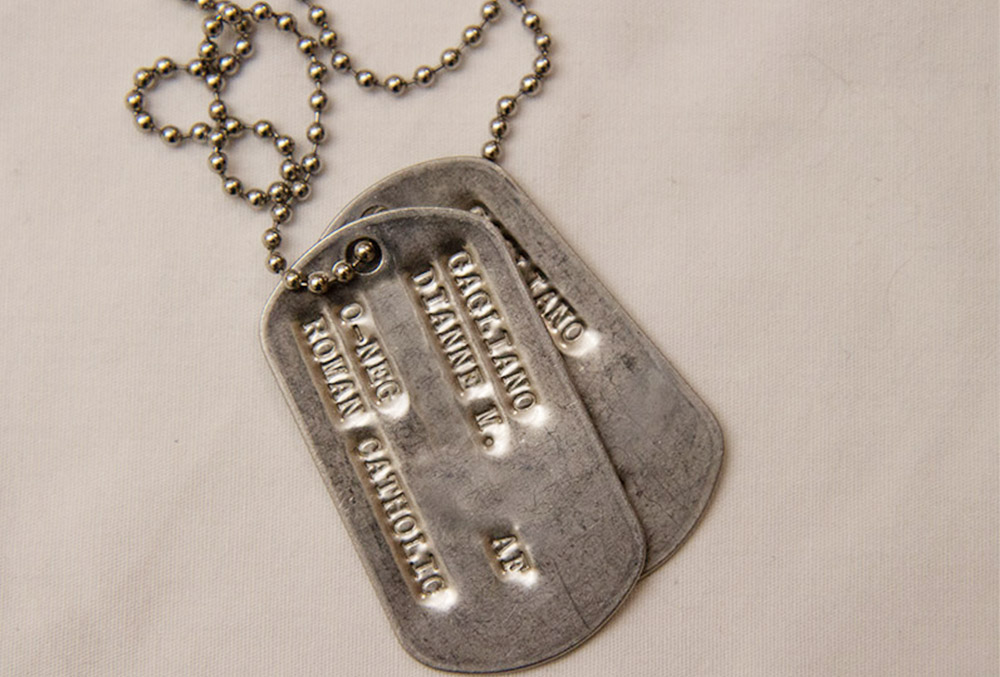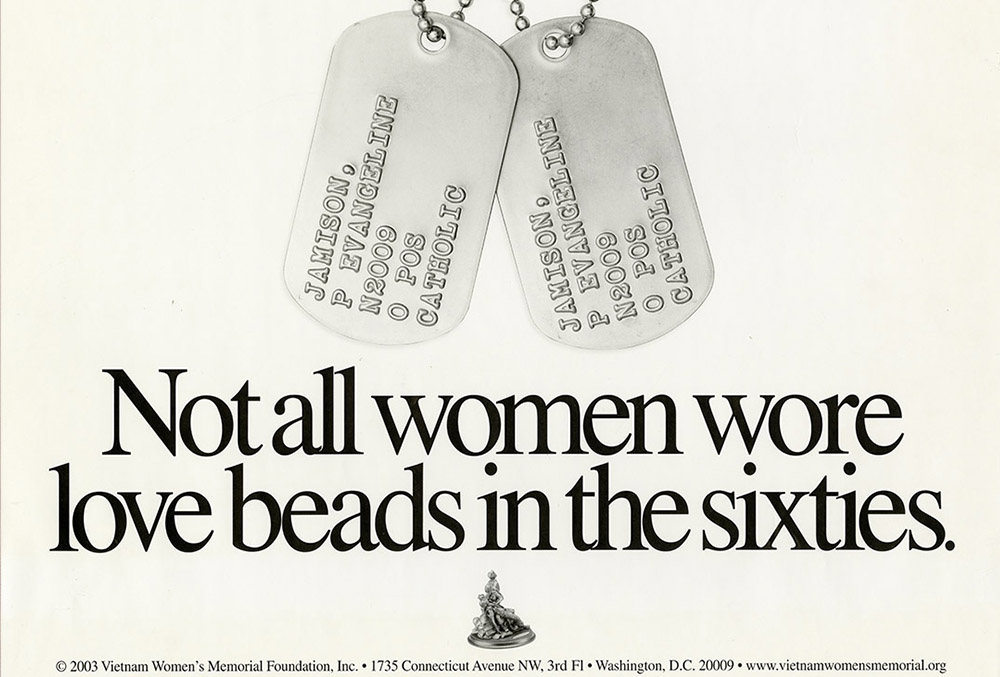News
February 25, 2022
Flashback Friday - Nursing During the Vietnam War

Gagliano's dog tags, which she wore during her deployment to Vietnam.
With the invasion of Ukraine by Russian forces, war in on many of our minds this Friday. Dianne M. Gagliano was a new flight nurse when she was deployed to Vietnam in 1971. During her tour of duty, she flew medical and humanitarian missions all over Southeast Asia, including airlifts for prisoners of war and orphaned children, in addition to caring for critically injured troops.
"We flew at all hours of the day and night and would cross ten time zones en route to the West Coast, as well as cross over the International Dateline," she recalled. "Our circadian rhythms were constantly disrupted and left us mentally dull for much of our duty day."
Combat casualties were airlifted to a U.S. Air Force medical center hub along Vietnam's coast and the critically injured - those with head and spinal cord injuries - were flown back to the U.S. for treatment.

A poster from the Vietnam Women's Memorial Foundation, from 2003.
0/1
"We had to anticipate each patient's needs and ensure that all special equipment, needed supplies, and medications were provided in sufficient quantity for the duration of each patient's flight," she recalled.
No diversions were made for medical emergencies on these trans-Pacific crossings, which meant improvisation was key when supplies ran out.
A C-141 cargo airlift transported patients out of Vietnam and could hold up to 44 litters and 48 ambulatory patients. "With metal flooring and side walls and little or no insulation and limited cargo lighting, it made for a noisy, dimly lighted, and uncomfortable thermal environment to work in during the long flights," Gagliano said.
The medical crew wore earplugs throughout the flight, which further impeded their ability to communicate with each other and with their patients. Because they often could not hear a respirator cycling or suction machine operating, the flight nurses had to closely observe patients to determine their status and the equipment's effectiveness.
"Our greatest asset was that we were transporting the healthiest patient population that a medical team could hope for - at least 90 percent were in their twenties," Gagliano recalled. "I encountered only one inflight death among the more than 1,000 patients that I transported during my years in Vietnam."
This #FlashbackFriday brought to you by the Bjoring Center for Nursing Historical Inquiry, now in its 30th year.
